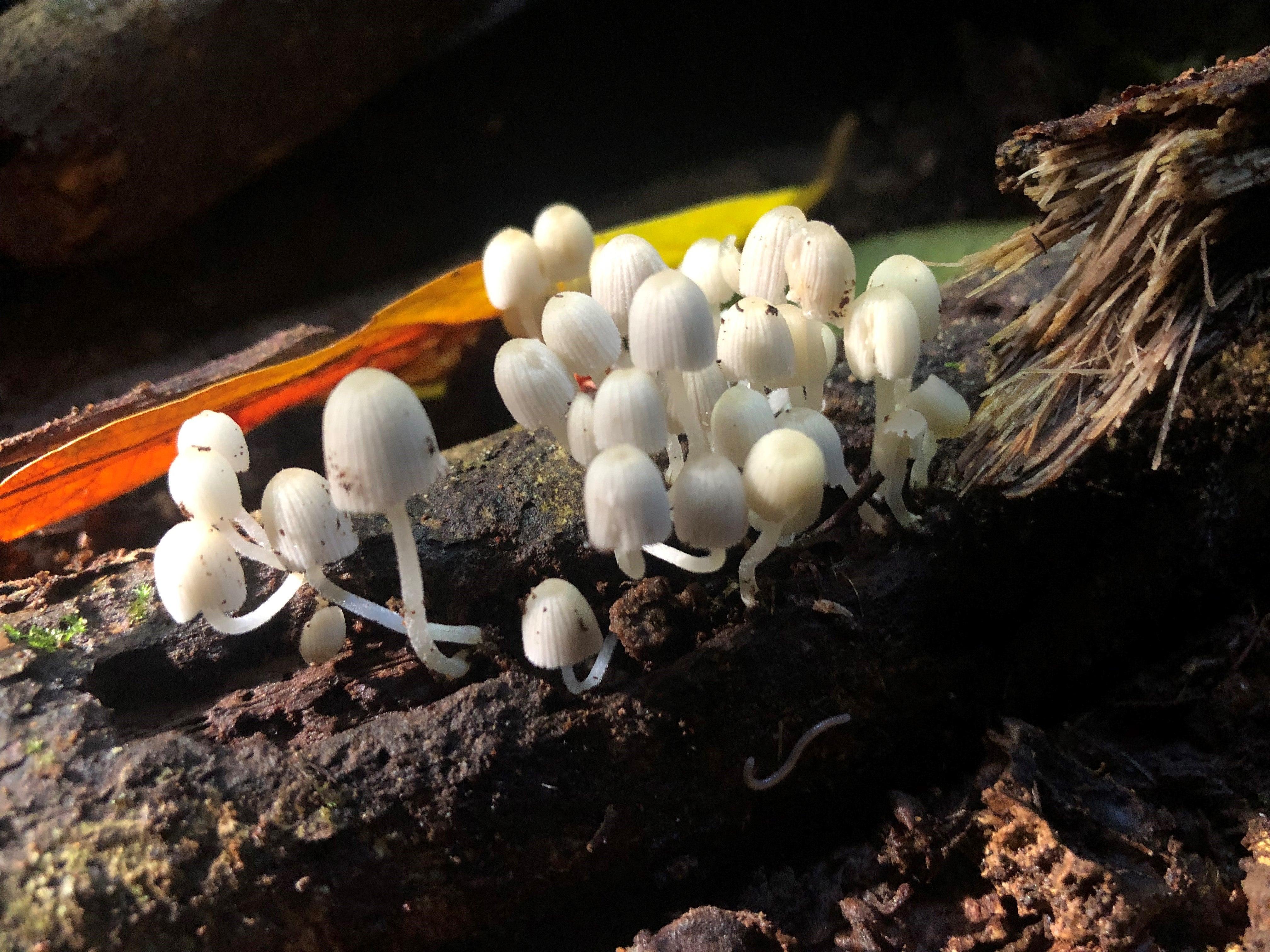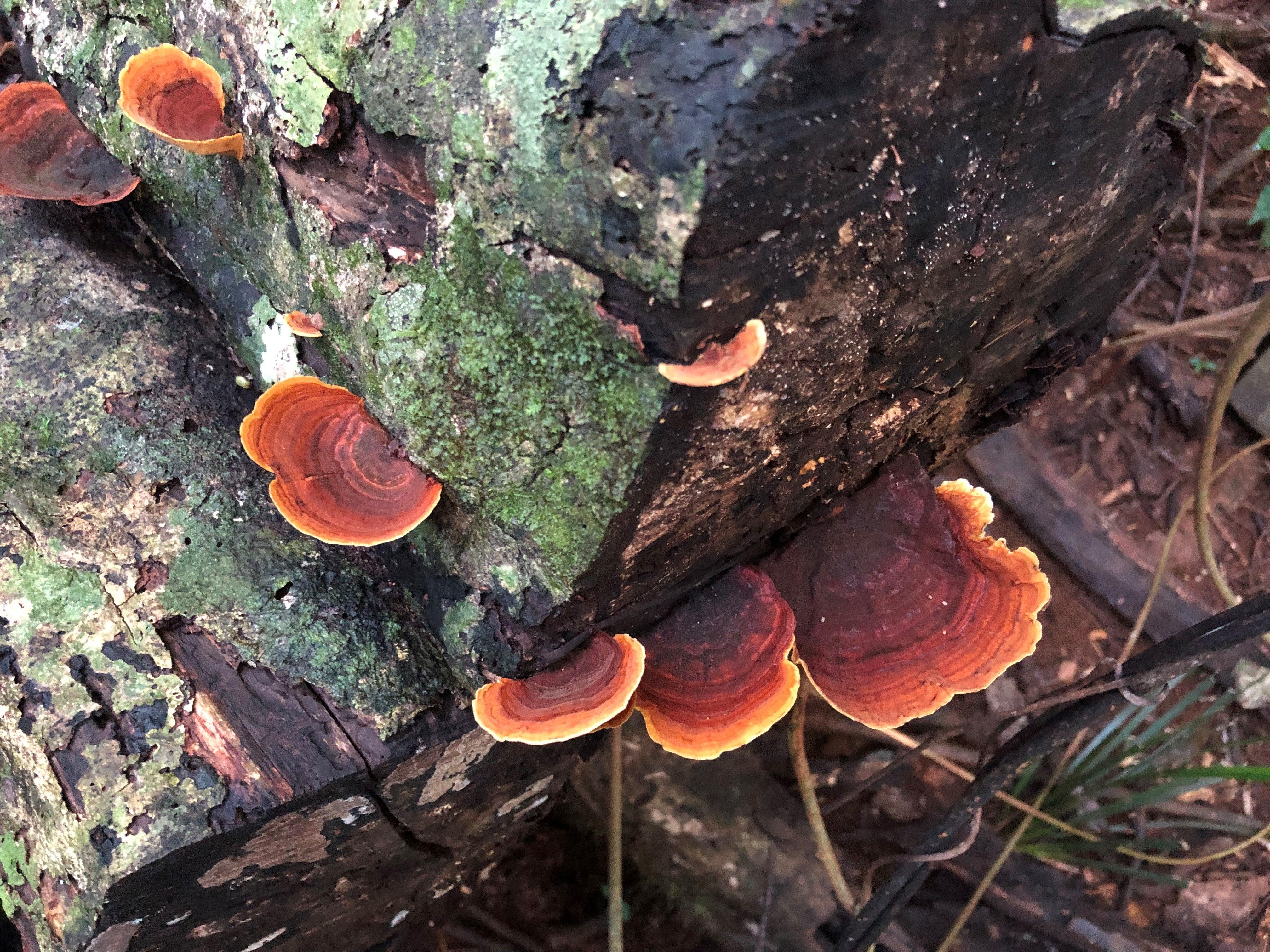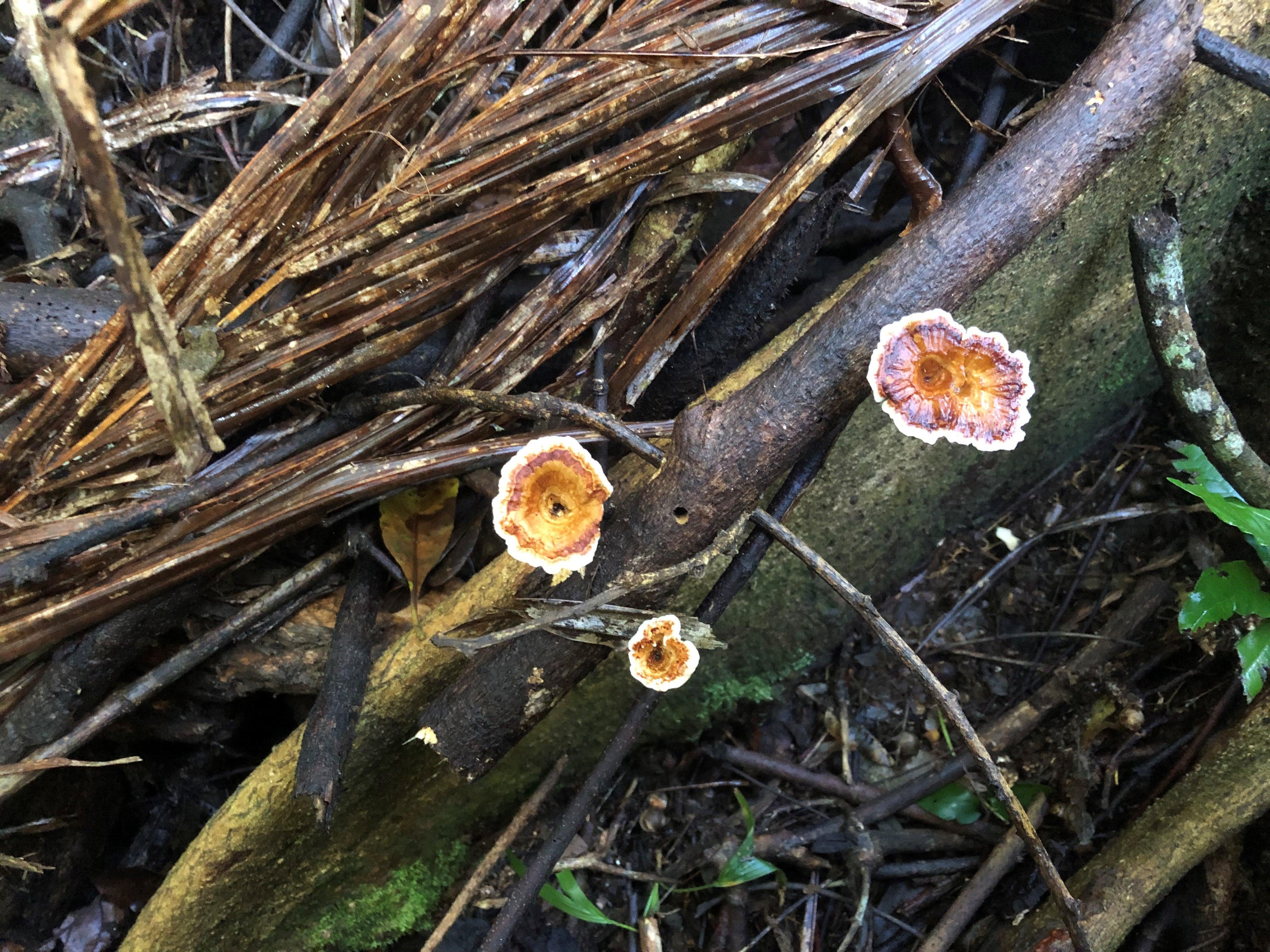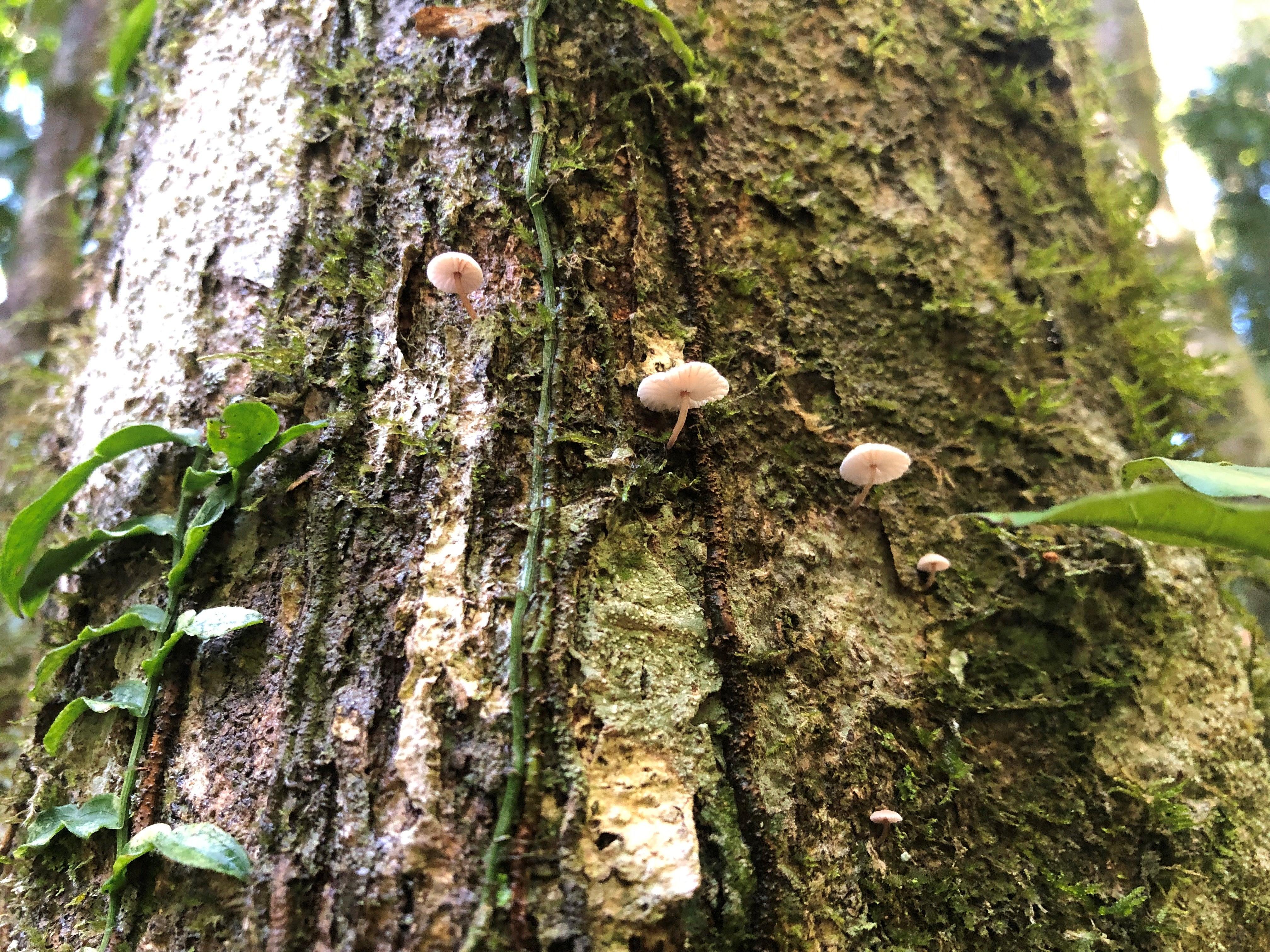Fungi foray at Mary Cairncross Scenic Reserve
Read about the fungi recently recorded in the Reserve
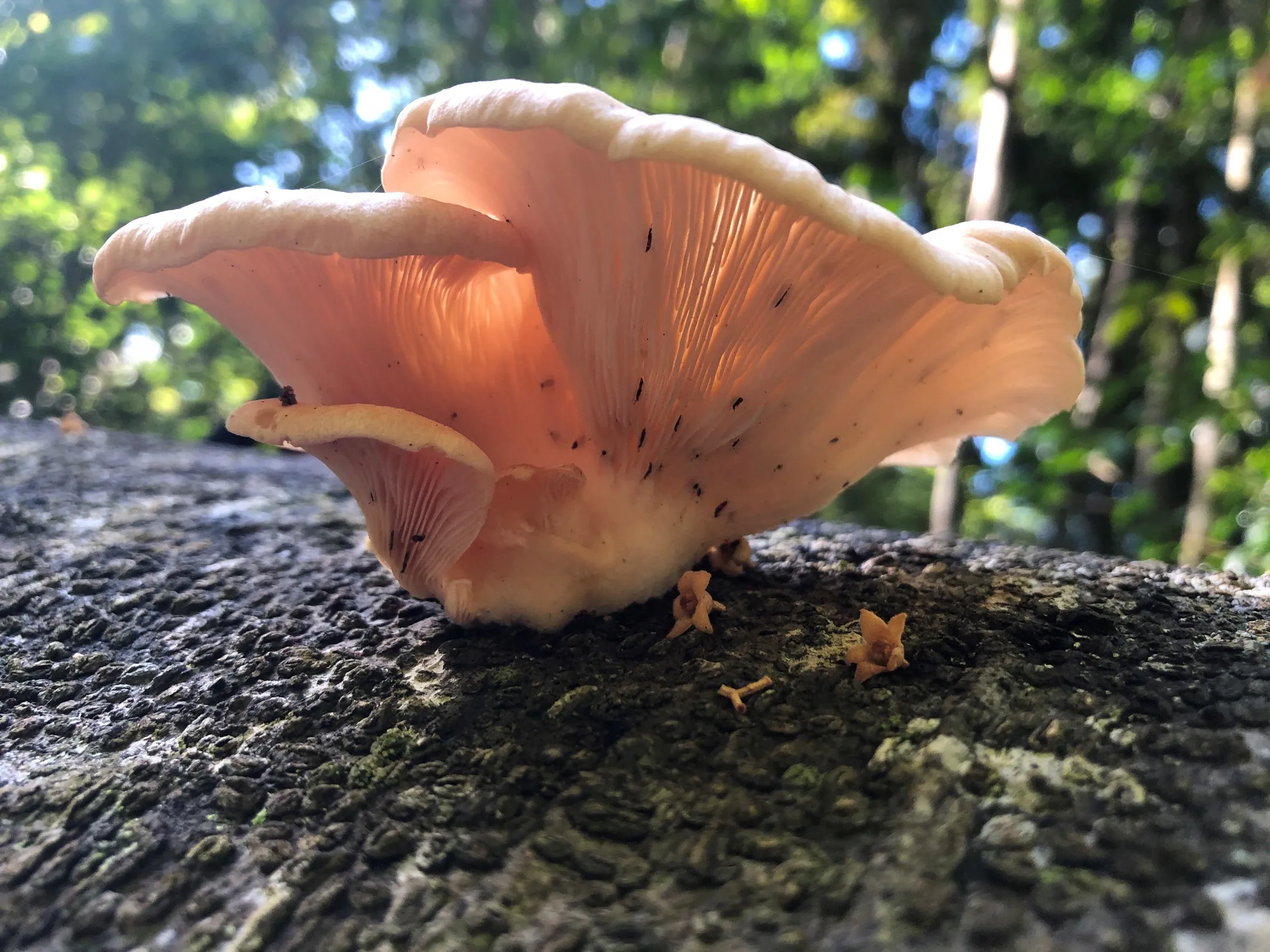
Article and images by Environmental Visitor Centre Conservation Officer, Sunshine Coast Council
2023 has seen a focus on fungi for Mary Cairncross Scenic Reserve. The Rainforest Discovery Centre’s display has been focused on the variety of fungi in the reserve and their various roles. A research project has been started to collect samples of fungi for lodging at the Herbarium and to take DNA samples of.
As part of this research program, we have started a monthly fungi foray into the forest to learn and monitor the fungi. The first foray was held in July and saw six of us head out with Fran Guard. With showers the day before and some rain the previous week there were a few fungi out even though it was mid-Winter. We headed to the middle track and then south on the boardwalk towards Fryers Creek and the fallen fig tree near the large red cedars hoping for a bit of light to spot fungi in.
Just before the fallen fig near the seedling stinging tree was a small cluster of Fomitopsis feei. This is a brown rot fungus with the upper surface smooth and concentric bands of a pinkish tone. When cut, the cut edge of the Fomitopsis went a beige-pink colour. This is a polypore fungi. Polypores are a group of tough woody fungi with pores instead of gills. Fomitopsis feei has small pores underneath the fruiting body. Fungi spores come out of the pores.
Brown rot fungi like the Fomitopsis take the cellulose and hemicellulose out of dead wood but not the lignin. After the cellulose and hemicellulose is removed by the fungi the remaining wood has shrunk and is a dark brown colour. The wood breaks into roughly cubical pieces as the lignin is still present. This is known as brown cubic rot. In contrast White rot fungi break down both lignin and cellulose. This leaves behind a light-weight white fibrous tissue instead.
We then came across a clump of small white mushrooms Coprinellus disseminatus. These fungi only last a day or two until they deliquesce (when organic matter becomes liquid during decomposition). These were on the ground between a couple of fallen trunks on well-rotted wood. They are small and delicate, and you can see the gills through the translucent mushroom cap. Mushroom gills are thin, papery structures that hang vertically underneath the mushroom cap. Most people would be familiar with gills from the kitchen when cutting up edible button mushrooms.
On the fallen fig were several species. A large Pleurotus djamor subsp rosea was growing in two clumps out the side of the trunk. Collembola also known as springtails could be seen underneath the fruiting body. The collembola graze on fungi spores. Also present on the dead fig was a species of brown jelly Auricularia spp, which were just emerging. This would be a good species to keep track of. With the wetter weather they would have started to come out. If the weather now goes dry without any rain they will start to dry out and crack. But when it starts to rain again, they will be there to rehydrate and keep growing.
On a living tree trunk near the fallen fig a small cream mushroom to about 13mm was growing out of the bark in amongst the moss. This could be a Marasmiellus sp. One of the common names for the Marasmiellus spp are “fairy parachutes” and in this case it looked like several fairies were parachuting down the moss-covered tree trunk. This species will be one to keep an eye on as it would be nice to know which species it is!
On our way out of the forest two common fungi were noticed in the Piccabeen grove before you get to Fryers Creek. The first was Microporus xanthopus. This fungus is often visible at Mary Cairncross and has a central stem with a funnel shaped fruiting body with brown and cream bands. It is a polypore and has very small pores which are only visible with a hand lens. Sometimes two fruiting bodies will start growing next to each other and morph together.
The second fungi spotted here was a leather – Stereum ostrea. Its common name is Golden Curtain Crust. This is a thin, fan shaped fungi brown in colour near the base grading to a lighter orange margin. It is often found in large groups on dead wood. It doesn’t have a stem like Microporus xanthopus but is attached at one side and grows out laterally. You can often see masses of Stereum ostrea on dead logs in the reserve. It looks best when it is wet but will often refresh when next it rains.

